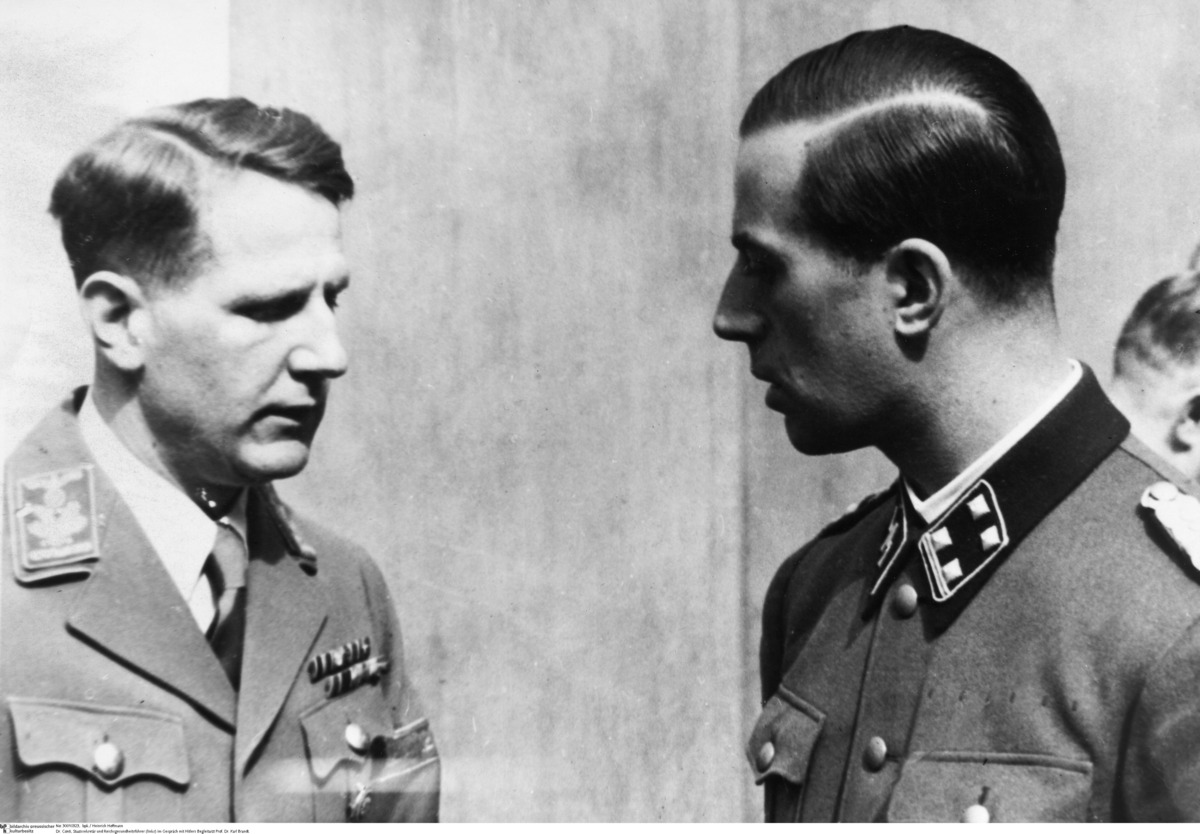Abstract
From 1939 on, the Nazi regime pursued the goal of “racial
enhancement” through the systematic destruction of individuals who were
supposedly “inferior” and “unworthy of life.” Children with incurable or
hereditary diseases were the regime’s first victims. In accordance with
Hitler’s instructions, his own personal physician, Dr. Karl Brandt
(right), organized the so-called children’s euthanasia program, in which
5,000 infants, children, and youths were killed. At the Nuremberg
Doctors’ Trial of 1946-47, Brandt was sentenced to death for his role in
the program and for other acts. He was executed on June 2, 1948.
Alongside Brandt’s “children’s euthanasia” program, the Reich
Chancellery (under the leadership of Phillip Bouhler) pursued an “adult
euthanasia” program. By 1941, more than 70,000 patients with hereditary
or incurable ailments had been murdered in this program, which was
codenamed “T-4” in reference to the Berlin address of its coordinating
office (Tiergartenstrasse 4). Bouhler was arrested after the war and
committed suicide. The Reich Minister of Health, Dr. Leonardo Conti
(left) was also involved in planning the euthanasia program. He, too,
was arrested after the war and hanged himself in his cell in Nuremberg
on October 6, 1945.
